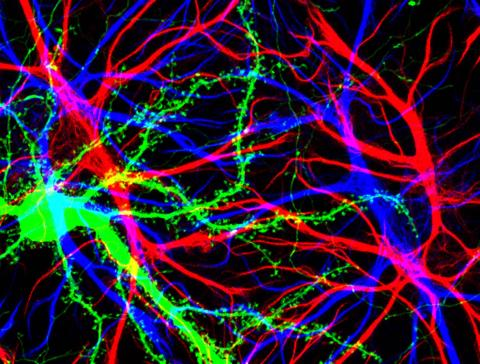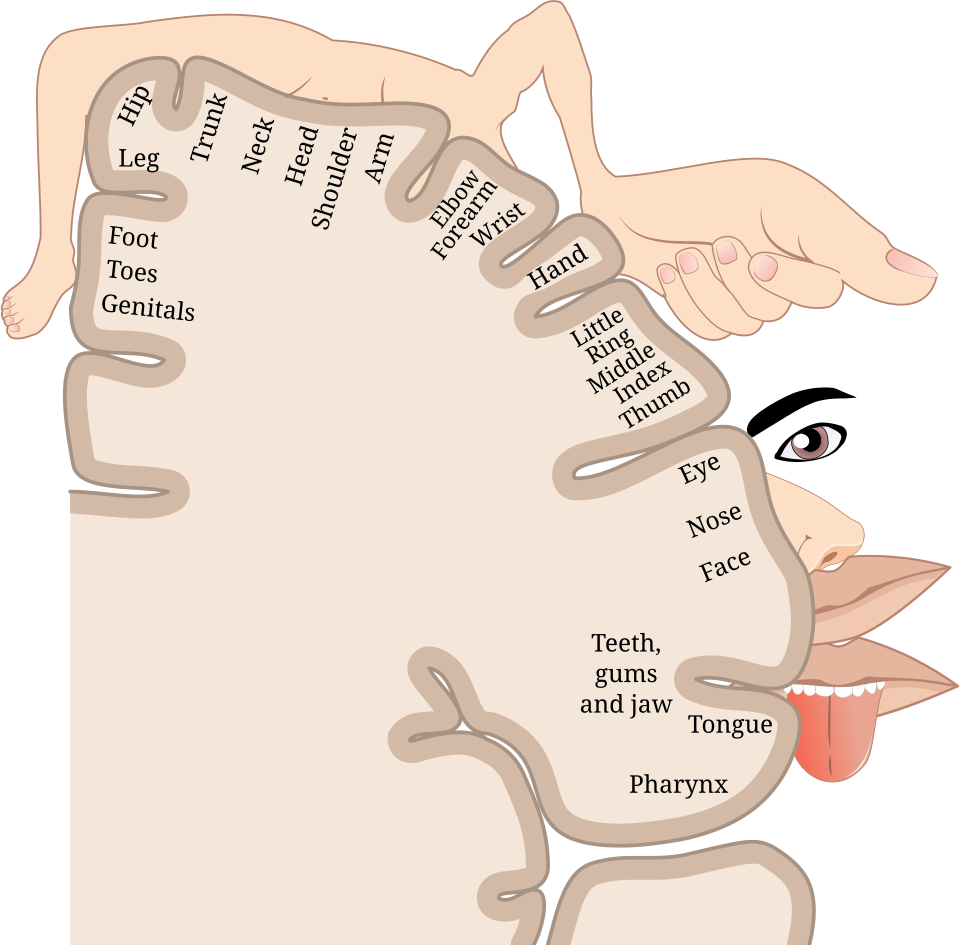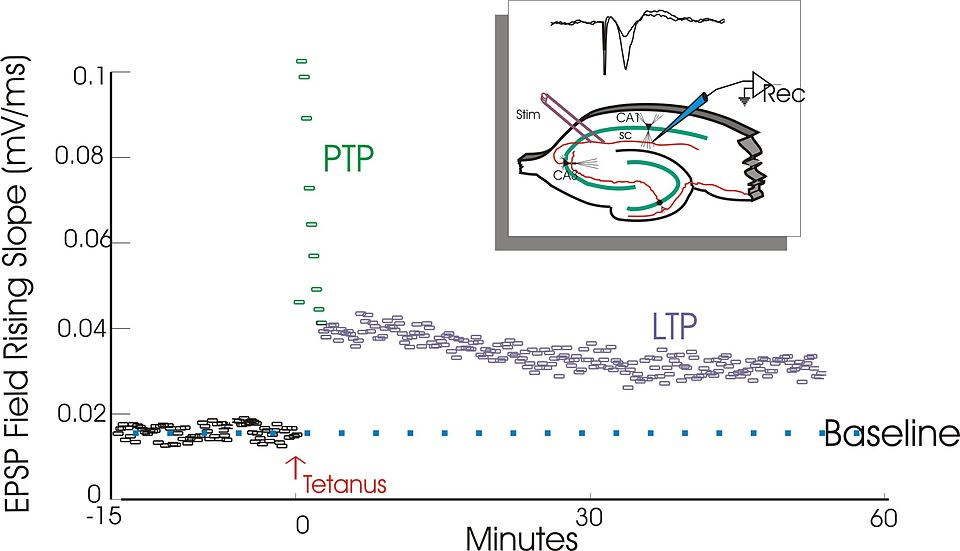IB Syllabus focus:
'- Definition and types of neuroplasticity
- Factors influencing brain adaptability
- Implications for learning and recovery'
Neuroplasticity illuminates the brain's remarkable ability to reorganise and adapt itself, shaping and reshaping in response to an individual's experiences and learning. This dynamic process plays a pivotal role in learning, recovery, and adaptation to new circumstances.
Definition of Neuroplasticity
Neuroplasticity, also known as brain plasticity, refers to the ability of the neural networks in the brain to change through growth and reorganisation. These changes range from individual neuron pathways making new connections to systemic adjustments like cortical remapping. In essence, neuroplasticity enables the neurons (nerve cells) in the brain to compensate for injury and adjust their activities in response to new situations or changes in their environment. To fully grasp the potential of neuroplasticity, it's crucial to understand the functions of various brain regions.
Types of Neuroplasticity
Neuroplasticity can be categorised into various types based on the nature of the stimulus and the timing of the occurrence. The principal types are:
Structural Plasticity
This is the brain's ability to physically change its structure in response to learning and experience. It involves the creation of new neurons (neurogenesis) and new connections (synaptogenesis). This aspect of neuroplasticity underscores the ongoing debate in the nature vs nurture discussion, highlighting the interplay between genetic predispositions and environmental influences.

Fluorescence micrograph of hippocampal neurons showing dendritic spines (green) on a neuron’s branches—small protrusions that form and remodel with experience, supporting structural plasticity. Glial cells (red) and other dendrites (blue) contextualize the local circuitry. Although captured in cell culture, the features illustrated reflect synaptogenesis relevant to learning. Source.
Functional Plasticity
The brain’s capacity to move functions from damaged areas to undamaged areas is termed functional plasticity. When one brain area is damaged, another part may take over the function previously performed by the damaged area. This is closely related to the localisation of function within the brain, where specific parts are responsible for distinct functions.

The sensory homunculus depicts how different body regions are represented along the primary somatosensory cortex, with magnified areas reflecting denser sensory input (e.g., lips, fingertips). This topographic organization provides the substrate against which compensatory functional changes can occur after damage or sensory loss. Source.
Synaptic Plasticity
This involves the strengthening or weakening of existing synaptic connections based on activity. It is fundamental for learning and memory. For further understanding, exploring the process of synaptic transmission can provide deeper insights into how synaptic plasticity operates at a cellular level.

Example of long-term potentiation (LTP) in rat hippocampus: after a brief high-frequency tetanus, the synaptic response stabilizes at a higher level, illustrating enduring synaptic strengthening central to learning and memory. Inset shows electrode placement in CA1/Schaffer collateral pathways. This figure includes more methodological detail than required by the syllabus, but directly visualizes LTP. Source.
Factors Influencing Brain Adaptability
Numerous factors can influence the adaptability of the brain. These factors can either facilitate or impede the neuroplastic process.
Age
Younger brains are generally more plastic and adaptable, allowing for more robust learning and recovery. However, neuroplasticity occurs throughout life.
Experience and Learning
Engaging in new experiences and learning new skills can enhance neuroplasticity, fostering the development of new neural connections. This is where understanding the working memory model becomes beneficial, as it highlights how our memory systems interact with neuroplastic processes.
Stress and Environmental Stimulation
Prolonged stress can impair neuroplasticity, whereas enriched environments that provide mental stimulation can enhance it.
Nutrition and Exercise
Proper nutrition and regular physical activity are vital for maintaining optimal brain health and promoting neuroplasticity.
Sleep
Adequate sleep is crucial for consolidating learning and experiences, facilitating synaptic plasticity.
IB Psychology Tutor Tip: Engage in diverse and challenging activities to stimulate your brain's neuroplasticity, enhancing learning, memory, and recovery capabilities, crucial for psychological development and rehabilitation.
Implications for Learning
Understanding neuroplasticity offers profound insights into learning processes. The adaptability of the brain elucidates how continuous learning and experience can shape our neural pathways.
Learning and Memory Enhancement
Continuous learning and cognitive stimulation can enhance synaptic plasticity, reinforcing memory and learning capacities.
Behaviour Modification
The malleable nature of the brain allows for behaviour modification techniques, helping individuals adapt to new behaviours and abandon undesired ones.
Skill Acquisition
The adaptability of neural networks supports the acquisition of new skills, with practice leading to strengthened and more efficient neural connections related to the skill.
Implications for Recovery
The application of neuroplastic principles is pivotal in devising strategies for recovery from brain injuries and neurological disorders.
Brain Injury Rehabilitation
Neuroplasticity is crucial in rehabilitating brain function after injury. Therapeutic interventions aim to stimulate the formation of new neural pathways to restore lost functions.
Neurological Disorder Treatment
Understanding brain plasticity aids in developing treatments for neurological disorders like stroke, enabling patients to regain functions and improve their quality of life.
Adaptation to Sensory Loss
In instances of sensory loss, such as blindness, other sensory modalities can adapt and enhance to compensate for the loss, showcasing the brain’s adaptive capabilities.
Applications in Interventions and Therapy
Cognitive Rehabilitation
For individuals with cognitive impairments, interventions focusing on training specific cognitive functions can induce neuroplastic changes, leading to improved function.
Mindfulness and Meditation
Regular mindfulness and meditation practices can induce structural and functional brain changes, promoting well-being and stress reduction.
Neurofeedback
This intervention utilises real-time displays of brain activity to teach self-regulation of brain functions, facilitating changes in neural pathways and improving various conditions.
IB Tutor Advice: For exams, relate neuroplasticity concepts to real-life examples, illustrating how experiences, learning, and recovery can reshape the brain, to deepen understanding and improve your answers' applicability and insight.
Ethical Considerations and Future Research
Ethical Implications
The ability to alter brain structure and function raises ethical questions about the limits of such interventions and the potential for misuse, necessitating careful consideration and regulation. These concerns are analogous to the ethical considerations in animal studies, where the welfare and rights of subjects are paramount.
Future Directions
Ongoing research aims to further elucidate the mechanisms of neuroplasticity and explore innovative applications, potentially unlocking new therapeutic approaches for various conditions.
Understanding the nuances of neuroplasticity provides invaluable insights into the brain’s adaptability and resilience. This knowledge is not only foundational for comprehending learning and memory but also instrumental in developing interventions for neurological recovery and enhancement. By delving deeper into the complexities of neuroplasticity, we pave the way for advancements in treating brain injuries, enhancing cognitive capabilities, and fostering overall brain health.
FAQ
Neuroplasticity does not occur uniformly across the brain; certain regions are more susceptible to change, particularly those involved in learning and memory, such as the hippocampus. The plasticity of different brain regions can be influenced by factors like age, experience, and the type of learning involved. For example, the prefrontal cortex, involved in higher-order cognitive functions, exhibits considerable plasticity, allowing for the development of complex behaviours and thought processes. On the other hand, regions responsible for more basic, innate functions, like the brainstem, exhibit less plasticity. Understanding the variable nature of neuroplasticity across different brain regions is vital for developing targeted interventions to enhance or mitigate plastic changes in specific areas.
Yes, neuroplasticity can indeed be influenced by pharmacological interventions. Certain medications can promote or inhibit the processes underlying neuroplastic changes. For instance, antidepressant medications may foster neuroplasticity by promoting the release of neurotransmitters like serotonin and enhancing the growth and development of neurons (neurogenesis) and connections (synaptogenesis). On the other hand, substances like alcohol can impair neuroplasticity by disrupting neurotransmitter function and causing neuronal damage. Thus, pharmacological interventions can play a critical role in modulating neuroplasticity, with potential implications for treating various neurological and psychiatric disorders.
Absolutely. While neuroplasticity is often considered in a positive light due to its role in learning and recovery, it can also contribute to the development of maladaptive behaviours and negative cognitive patterns. For instance, the repeated activation of certain neural pathways associated with anxiety or stress can strengthen these pathways, making them more likely to be activated in the future. This can lead to the development and reinforcement of maladaptive thought patterns and behaviours, such as those seen in anxiety disorders, addiction, and chronic pain conditions. Thus, understanding the dual nature of neuroplasticity is crucial for developing interventions that can both promote adaptive changes and mitigate maladaptive ones.
Neuroplasticity is fundamental to the 'use it or lose it' principle in cognitive functions. This principle posits that neural connections that are frequently used are strengthened, while those that are not used are weakened or eliminated, a process known as synaptic pruning. This means that regularly engaging in cognitive activities and learning new skills can enhance and maintain cognitive functions by strengthening relevant neural pathways. Conversely, lack of stimulation can lead to the weakening or loss of such functions. For instance, a consistent lack of engagement in intellectually stimulating activities can lead to a decline in cognitive abilities over time, highlighting the importance of maintaining an active and engaged mind.
Neuroplasticity and critical periods are intertwined concepts in developmental psychology. A critical period is a maturational stage during which the nervous system is especially sensitive to certain environmental stimuli. If, during this period, the organism does not receive the appropriate stimuli required to develop a given function, it may be difficult to develop that function later in life. For instance, the critical period for language acquisition in humans is generally considered to be around the age of seven. Neuroplasticity is heightened during these critical periods, allowing for rapid and substantial neural development and changes in response to environmental stimuli. After the critical period, the brain remains plastic, but modifications require more effort and are usually less comprehensive.
Practice Questions
Neuroplasticity is pivotal for recovery after brain injury, as it enables the brain to reorganise and form new neural connections, compensating for damaged areas. For example, after a stroke affecting motor regions, a patient might regain movement through rehabilitative therapies that leverage neuroplasticity, encouraging undamaged areas to assume lost functions. This adaptability highlights the brain's resilience and its ability to relearn and reassign functions, facilitating recovery and the reclamation of lost abilities through consistent, targeted interventions and therapies. The understanding of neuroplasticity underscores the potential for functional restoration post-injury, emphasizing the adaptability and regenerative capabilities inherent in the brain.
Structural and functional plasticity have profound implications in learning and acquiring new skills. Structural plasticity allows the brain to alter its physical structure, developing new neurons and synapses in response to learning, such as a musician developing refined motor skills through practice. Functional plasticity, on the other hand, enables undamaged brain areas to take over functions of damaged areas, exemplified by a person adapting to sensory loss, like blindness, by enhancing their other senses. These manifestations of neuroplasticity illustrate the brain's dynamic capability to adapt, learn, and overcome challenges, optimising its function in diverse circumstances.

